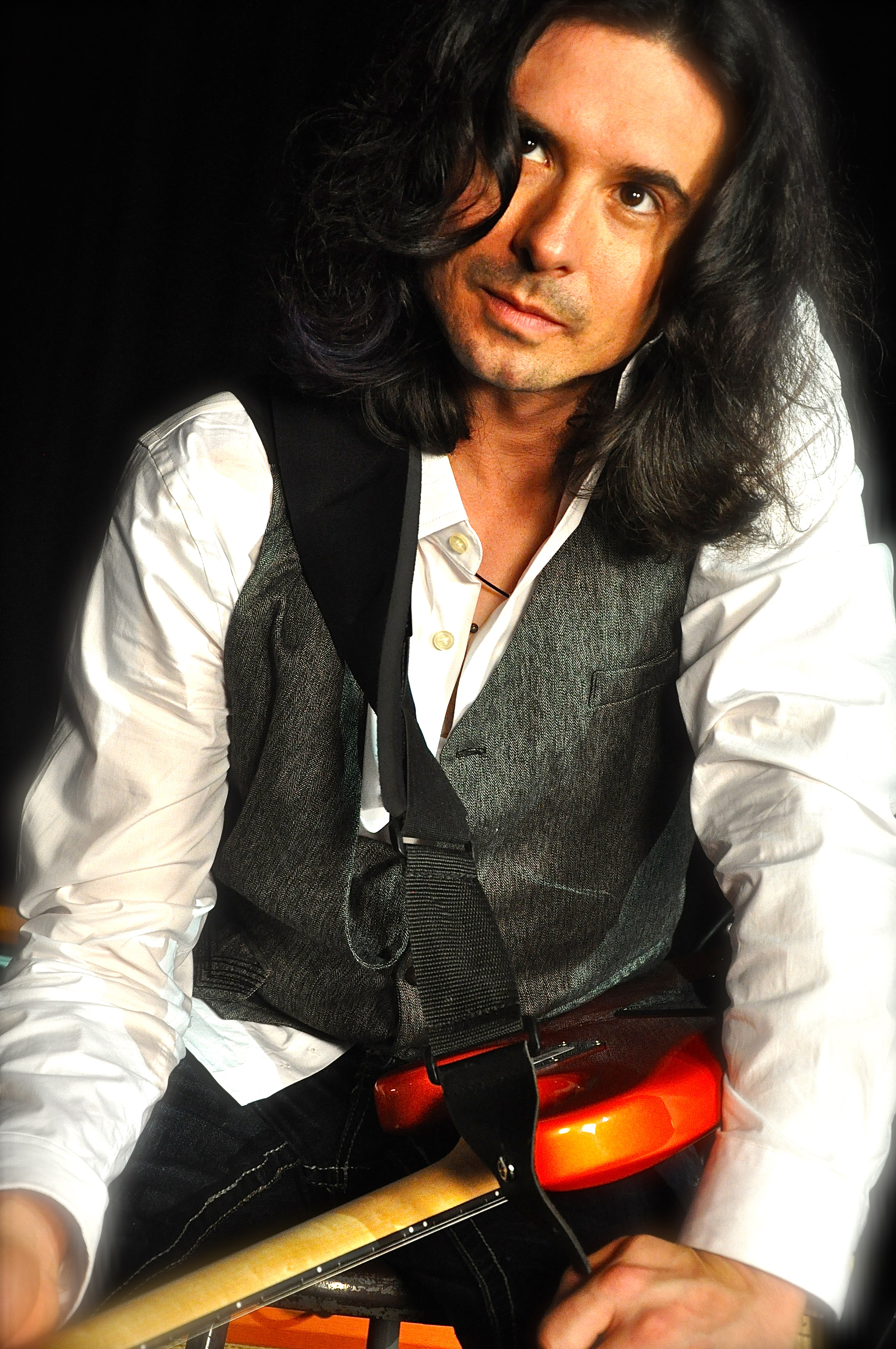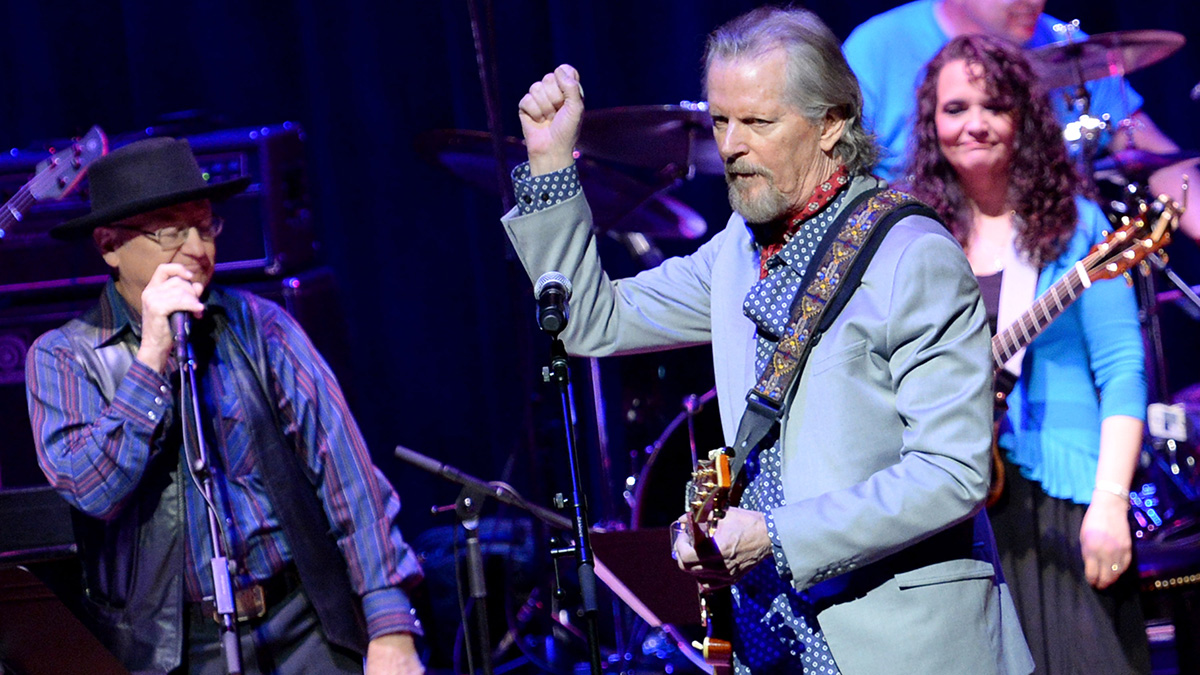Guitarist and Berklee Professor Scott Tarulli Discusses His New Album, 'Anytime, Anywhere'

As a Berklee College of Music professor, Scott Tarulli is well versed in all things rock, blues and jazz (His friends know he also happens to be a closet Dio-loving metal head).
His new album, Anytime, Anywhere, features a treasure trove of hooks and catchy songs; it also happens to feature special guests including bebop slide guitar legend David Tronzo, bassist Tony Levin and Jerry Marotta. I recently caught up with Tarulli to discuss the new album.
What was it like working with David Tronzo on the song "One Year"?
Dave is a great guy, and we've known each other for years but never got a chance to play music together.
I've always been a big fan of his, and the song "One Year" on my new album was perfect for him. It was a great session. He came in and the band sat in a circle and we tracked it live. No fixes or overdubs. It came out to be a great dialogue between us. It my favorite track on the album.
You’re a very active sideman. What gear do you use for your projects, as compared to session work?
I do a good amount of live and studio work as a sideman. For my music, my live rig is strictly an Orange OR50 head through an Orange 2x12 or 4x12 closed-back cab. I love my Music Man Silhouette guitars. I have those stocked with Seymour Duncan pickups. I use Xotic pedals like the BB, AC and RC for boost/gain tones, and then various vintage modulation pedals. I also use the MXR Carbon Copy delay, and I also have a Mike Battle Tube Tape Echo.
Get The Pick Newsletter
All the latest guitar news, interviews, lessons, reviews, deals and more, direct to your inbox!
As for sideman work, it really comes down to the artist and genre. I'm more likely to play old Fender, Vox or Marshall amps in the studio for other artists, and Telecasters, Gibsons, etc. Most of the sideman work I do is classic-sounding tones and textures, so I stick with that kind of gear. I use pedals for effects, and that totally depends on the gig.
How might an album go down that you get hired for?
If the artist/producer wants the band to play live, there is usually a rehearsal, but I find a lot of what I get called for is coming in to add textures, rhythm parts and leads to existing tracks. I usually show up with various guitars and amps and hear the stuff for the first time in the session. Then it’s all about hashing out ideas to give the song shape. I am a big fan of that type of guitar playing, the old Philly soul records, Beatles albums, James Brown and even pop albums. I always loved how theses great guitar players brought the songs to life with tiny parts or groove. But basically, I think about intonation, tone and taste when I show up. The studio can get tense at times. Keeping the vibe light and not taking life so serious is a big help in the recording process.
Some of the songs were tracked totally live without fixes or overdubs. On some you added overdubs to pan out the arrangements. Can you discuss this approach?
Yes, I was so lucky to have players on board who were great listeners and great players. I have to admit, I was nervous I might hate a solo I played in a take. There are a few tunes I redid solos on, but songs like "Awake," "One Year" and "1 AM" were totally live, including the solos. Even if I didn't think the solo was perfect, It was hard to change because the band was gelling. In the end it was more important to keep the band's vibe rather than replace the solo for demonstration purposes.
You also worked with Jerry Marotta (Peter Gabriel. Paul McCartney, David Foster, Hall & Oates), and Tony Levin (King Crimson, Peter Gabriel, Alice Cooper, John Lennon). That must have been pretty amazing.
Working with Jerry Marotta and Tony Levin was a dream come true. I met them while doing a singer songwriter album at Jerry's Dreamland studio in Woodstock, New York. He was producing the album and we hit it off as players and as people. Tony was also on this album; I ended up going out to Dreamland and tracking two songs for my album ("1 AM" and "Last Time"). The basics were tracked live. It was surreal for me sitting across from Tony and playing live with them. These two have been heroes of mine for decades. I've also seen them on big stages while growing up. And let me tell you, they couldn't be kinder people.
Who are some of your other influences?
I picked up the guitar at 12 because of Buck Dharma's solo on "Veteran of the Psychic Wars" from Blue Oyster Cult's live album. Also, REO Speedwagon was so cool to me. That is when Hi Infidelity came out. Then I was totally into Joe Satriani, Def Leppard, Whitesnake, Ozzy and Richie Sambora. I still am. But then I got into soul albums and went into a heavy jazz phase. I guess if I had to name big inspirations, I'd say Herbie Hancock, Jimi Hendrix, Cornell Dupree, later-era John Coltrane, Bill Evans, Jeff Beck, Steve Lukather, James Burton and anyone who played guitar on all of the wonderful pop albums I love.
You told me the album was written and recorded a little over a year after your divorce. How did this affect the writing?
Yes, there were huge changes in my life while writing and tracking this album. So the performance and the songs are a product of that part of my life. I'll never relive that era again, and this album is a snapshot of how I felt, what I was or wasn't eating, what I was drinking and the sleep I never got. I think you hear it all in my playing.
To be honest, the year was crazy, almost a blur. But it makes the album that much more special to me. I chose the sequence of songs very carefully. It’s meant to be heard in one sitting. I reference melodies throughout the album and connect it that way. And there is a shape to the album. Life in real time.
For more about Tarulli, visit scotttarulli.com.









